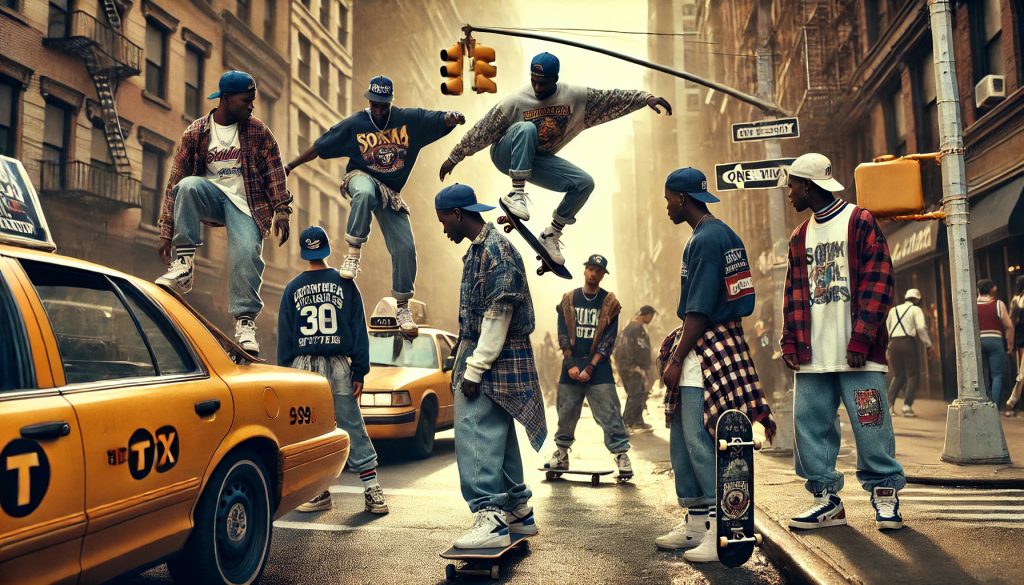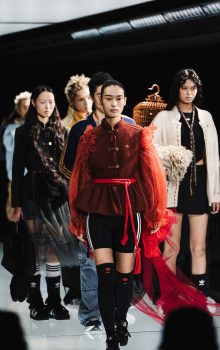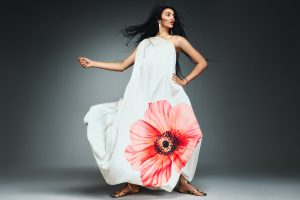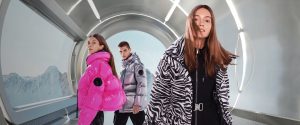The 90s were a defining era for streetwear, combining hip-hop culture, skateboarding, and sportswear into a unique fashion movement that continues to influence fashion trends. Steeped in the underground culture and subcultures, 90s streetwear quickly became a global phenomenon, worn by rappers, athletes, and youth looking to express their individuality through what they wore.

90s streetwear
What began as a subcultural movement rooted in music, sport, and rebellion evolved into a force within mainstream style. Street fashion in this decade was more than just clothing; it was a statement of identity, shaped by the urban communities that championed it. With hip-hop, skateboarding, grunge, and sportswear converging, the 90s gave birth to an eclectic mix of styles that were both bold and effortlessly cool. From oversized silhouettes and baggy jeans to statement sneakers and logo-heavy apparel, the decade’s fashion was all about attitude and authenticity.
The 1990s marked a defining era for streetwear, shaping the global fashion landscape in ways that continue to appeal to GenZ. What makes 90s streetwear enduring is its adaptability and influence on contemporary fashion. Key trends—whether the relaxed fits of skater culture, the rugged aesthetic of grunge, or the athletic appeal of tracksuits and trainers—remain integral to modern wardrobes. Fashion designers frequently draw inspiration from the era while modern streetwear brands continue to reinterpret its distinct looks. The 90s were also pivotal in elevating sportswear brands such as Nike, Adidas and Tommy Hilfiger beyond their functional roots, integrating them into everyday fashion and making them symbols of cultural significance.
This lasting impact is a testament to the decade’s unique fusion of music, sport, and rebellion—an aesthetic that shapes streetwear today. As we explore the most legendary styles that defined 90s streetwear, it becomes clear why these fashion trends continue to inspire designers. This article explores the most iconic 90s streetwear, the brands that dominated the scene, and how these trends continue to shape fashion.
TABLE OF CONTENTS
- The Evolution of 90s Streetwear
- Iconic Streetwear Styles That Defined the 90s
- The Cultural Impact of 90s Streetwear
- Resurgence of 90s Streetwear
- Incorporating Streetwear Aesthetics into Your Daily Wardrobe
The Evolution of 90s Streetwear
The emergence of 90s streetwear was deeply rooted in counterculture movements, serving as a response to mainstream fashion and traditional luxury aesthetics. It was a style born from the streets, where self-expression and rebellion were at the core of its appeal. Unlike the polished and structured looks of previous decades, streetwear embraced oversized silhouettes, bold graphics, and a mix of high and low fashion. The movement was driven by communities that sought individuality through clothing, taking influence from their environments rather than fashion runways. It was a period where authenticity mattered and the styles worn by skaters, hip-hop artists, and alternative rock fans defined the era.
Music, sports and subcultures played a crucial role in shaping 90s streetwear, with hip-hop artists Tupac Shakur, The Notorious B.I.G. and Wu-Tang Clan turning street style into a fashion statement. Oversized jeans, baggy T-shirts, and Timberland boots became the uniform of urban youth and brands like Karl Kani, FUBU — For Us By Us and Cross Colours catered specifically to the hip-hop community.
Simultaneously, the skateboarding community was a driving force behind 90s streetwear. Skaters needed loose durable clothing that allowed movement, leading to the popularity of baggy jeans, oversized graphic tees and rugged skate shoes. Street skating hotspots like New York’s Brooklyn Banks and California’s Venice Beach became fashion hubs, where skaters mixed thrifted pieces with branded gear. By the end of the decade, skateboarding’s raw aesthetic had shaped streetwear into a movement that combined sport, subculture, and fashion.

The skateboarding community was a driving force behind 90s streetwear
Streetwear brand Supreme, founded in 1994 by James Jebbia as a small skate shop, is a cornerstone of 90s streetwear. Supreme’s simple yet bold branding, limited releases, and collaborations with artists and brands set the foundation of a rebellious, sought-after brand. The early designs embraced oversized fits, graphics and collaborations with artists and musicians, appealing to skaters, hip-hop fans and countercultural youth. Supreme’s influence extended beyond skateboarding, infiltrating the hip-hop scene as rappers like Nas and The Notorious B.I.G. were spotted wearing the brand. The label’s collaborations with sportswear companies, such as Nike and The North Face, cemented its place at the intersection of fashion and street culture.
The 90s also saw sportswear brands transition from performance gear to wardrobe staples, with tracksuits, trainers, and oversized jerseys making their way from the pitch to the streets. Hip-hop artists, skaters, and athletes embraced sportswear as everyday attire, with Nike, Adidas, and Puma at the forefront. The rise of sneaker culture, fuelled by the success of Nike’s Air Jordans, cemented the importance of sportswear in street fashion. Originally designed for basketball, Air Jordans transcended the sport, becoming a cultural phenomenon thanks to Michael Jordan. Limited-editions and high-profile collaborations turned sneakers into status symbols, sparking a resale market and sneakerhead subculture. These brands became more than just clothing—they were status symbols that combined luxury, sport, and street culture.
Three cities played a pivotal role in defining streetwear’s evolution—New York, Los Angeles, and Tokyo. New York, the epicentre of hip-hop and graffiti culture, integrated the movement with logo-driven fashion and oversized silhouettes. LA, influenced by skateboarding and surf culture, leaned towards relaxed styles that blurred the lines between streetwear and casual-wear. Meanwhile, Tokyo brought an avant-garde approach to street fashion, combining Western influences with its subcultural aesthetics, seen in the rise of brands like BAPE. Together, these cities shaped the global narrative of 90s streetwear, laying the foundation for a movement that remains integral to contemporary fashion.
Iconic Streetwear Styles That Defined the 90s
Baggy Jeans And Oversized Tees
The 90s streetwear aesthetic was defined by oversized clothing, a look that became synonymous with urban culture and self-expression. Baggy jeans and oversized t-shirts emerged as a direct rebellion against the slim, structured silhouettes of previous decades, offering comfort and a sense of effortless cool. This trend was popularised by hip-hop icons such as Tupac Shakur, The Notorious B.I.G., and Snoop Dogg, who embodied the relaxed yet confident style that resonated with the youth. Brands like Karl Kani, FUBU, and Phat Farm played a crucial role in amplifying this movement, designing clothing specifically catered to hip-hop culture. Women also embraced the trend, with artists like Aaliyah sporting baggy jeans paired with crop tops, and groups such as TLC donning oversized denim outfits, proving that the style transcended gender boundaries while maintaining its street credibility.
Sneaker Culture And Must-Have Kicks
The 90s saw the explosion of sneaker culture, elevating trainers from athletic gear to street fashion essentials. Footwear became a status symbol, and certain silhouettes achieved cult-like followings. The Air Jordan 5 and 11 cemented Michael Jordan’s influence in fashion, while the Nike Air Max 95 introduced bold, futuristic designs. Adidas Superstars, already popularised in the 80s, remained a staple, further immortalised by hip-hop’s affinity for the brand. Reebok Classics also made their mark, embraced by both hip-hop artists and everyday wearers. Run-D.M.C.’s groundbreaking partnership with Adidas in the 80s continued to influence the sneaker scene well into the 90s, sparking trends such as unlaced trainers and the widespread adoption of shell-toe sneakers. This period laid the foundation for the sneaker resell culture that dominates today’s streetwear landscape.
Tracksuits And Sportswear
Sportswear was no longer confined to the gym or the pitch—by the 90s, tracksuits had become a defining element of street fashion. Brands like Adidas, Puma, and Nike capitalised on this shift, producing vibrant, oversized tracksuits that were both comfortable and stylish. Hip-hop artists such as LL Cool J and Missy Elliott were frequently seen in coordinated tracksuits, reinforcing their streetwear appeal. Meanwhile, NBA jerseys, particularly those of teams like the Chicago Bulls and Los Angeles Lakers, became mainstream fashion statements, often layered over hoodies or worn with oversized denim. The Fresh Prince of Bel-Air’s Will Smith epitomised the era’s love for bold-coloured tracksuits, proving that sportswear was as much about attitude as it was about style.
Graphic Tees And Logo Mania
The 90s saw the rise of bold branding, with logos becoming a status symbol in streetwear. Brands such as Tommy Hilfiger, Polo Ralph Lauren, Guess, and Champion embraced logo-heavy designs, creating a sense of exclusivity and identity for those who wore them. Graphic t-shirts also became a key component of street style, often featuring striking prints, slogans, or album artwork that aligned with music and skate culture. The prominence of logos in the 90s has had a lasting impact, with vintage pieces from this era experiencing a resurgence in modern fashion. The revival of classic brands in contemporary streetwear underscores the enduring appeal of 90s logo-mania, proving that heritage and nostalgia remain powerful drivers in fashion trends.
Bucket Hats, Bandanas And Accessories
Accessories played a crucial role in defining 90s streetwear, with bucket hats, snapbacks, and bandanas becoming must-have items. LL Cool J and the Wu-Tang Clan popularised bucket hats, particularly Kangol -branded ones, solidifying their status as a hip-hop staple. Meanwhile, snapback caps, often featuring NBA or MLB team logos, were worn by artists like Tupac and Ice Cube, contributing to the crossover between music and sports fashion. Bandanas also became a key accessory, worn by hip-hop and rock artists alike, symbolising both style and cultural identity. Samuel L. Jackson’s signature Kangol hat further cemented its place in pop culture, ensuring that these accessories remained an integral part of 90s street style.
The Cultural Impact of 90s Streetwear
The 90s streetwear movement played a pivotal role in breaking racial and social barriers, creating a unifying style that transcended economic and cultural divides. Rooted in urban communities, streetwear was influenced by diverse backgrounds, with hip-hop, skateboarding, and sportswear combining seamlessly into a global fashion phenomenon. Unlike traditional high fashion, which was often exclusive and unattainable, streetwear was accessible and relatable, making it an authentic reflection of youth culture. This inclusivity allowed people from different backgrounds to embrace and contribute to the movement, shaping a style that was driven by individuality rather than societal norms. The influence of black culture, particularly through hip-hop, was instrumental in this shift, with artists using fashion as a means of self-expression, changing perceptions of style across mainstream and luxury fashion.
The impact of 90s streetwear on luxury fashion was revolutionary, challenging the rigid divide between high fashion and casual wear. By the late 90s, designers like Versace, Gucci, and Louis Vuitton recognised the cultural influence of hip-hop and began collaborating with artists who embodied streetwear’s rebellious spirit. Rappers such as The Notorious B.I.G. and Tupac Shakur regularly referenced luxury brands in their lyrics, elevating labels that were once seen as exclusive to the wealthy elite into symbols of street prestige. This era saw the emergence of designer collaborations that bridged the gap between couture and everyday fashion, paving the way for the high-low aesthetic that dominates today’s luxury streetwear. The impact of these collaborations is still felt, as modern luxury houses continue to align themselves with street culture through partnerships with contemporary artists and designers.

90s streetwear
The 90s also witnessed the birth of streetwear brands that would go on to define the movement in the decades to come. Supreme, founded in 1994 in New York, emerged as a skate-inspired label that challenged conventional retail models with limited releases and underground marketing tactics. At the same time, Japanese streetwear saw the rise of A Bathing Ape (BAPE), a brand that combined bold graphics with an exclusive, cult-like appeal. These brands revolutionised the industry by rejecting mass production in favour of scarcity and exclusivity, reshaping how street fashion was consumed. Their early success laid the foundation for an entirely new market, where streetwear was no longer just casual clothing but a form of artistic and cultural expression.
A prime example of streetwear’s lasting impact is Supreme’s meteoric rise and its role in shaping modern resale culture. In the 90s, Supreme’s strategy of limited drops and collaborations created an immediate demand, fuelling a secondary market where rare items could be resold at significantly higher prices. This practice not only redefined how streetwear was valued but also influenced the way fashion operates today, with brands across the industry adopting similar scarcity-driven models. Supreme’s influence extends beyond clothing, as it pioneered the intersection of hype culture, art, and commerce, proving that streetwear was more than a passing trend—it was a cultural revolution.
Resurgence of 90s Streetwear
The influence of 90s streetwear is evident today. Brands like Off-White, Fear of God and Palace draw inspiration from 90s aesthetics, reinventing oversized silhouettes, bold logos and vintage sportswear for the modern consumer. Sneakers remain at the forefront of street fashion, with retro Jordan and Nike re-releases continuing to dominate the market and many heritage brands have capitalised on nostalgia, reintroducing classic designs that defined the decade. The resurgence of baggy jeans, bucket hats, and logo-heavy apparel proves that the 90s streetwear movement was not just a passing trend but a lasting cultural shift.
Streetwear influencers have become pivotal in shaping trends, deftly combining fashion with culture, and inspiring millions on social media apps like Instagram. Among the notable names in the streetwear scene is six-year-old Coco (@coco_pinkprincess), whose unique style has captivated fans worldwide. Her playful and edgy streetwear layers bold patterns and colours. Coco’s rise as a child influencer redefined age boundaries in streetwear culture and proves that individuality transcends generations, earning her collaborations with top-tier brands.

90s streetwear
Teen influencer Leo Mandela, known by his handle @gullyguyleo, represents a generation of style-savvy youth who embody streetwear’s rebellious essence. Leo’s curated outfits—from oversized hoodies to eye-catching sneakers—have made him a beloved figure among both streetwear enthusiasts and fashion brands. His ability to mix high-end pieces with street staples reflects the modern evolution of streetwear, where luxury meets authenticity. Brands frequently turn to Leo for his ability to make experimental fashion choices relatable and aspirational to his followers.
Another prominent name is model Luka Sabbat (@lukasabbat), who effortlessly bridges the gap between streetwear and high fashion. Luka’s style is a laid-back sophisticated aesthetic, combining statement streetwear pieces with a sleek edge. His role as an influencer goes beyond just clothes—he has become a cultural icon who collaborates with major brands and contributes to creative projects in art, film, and design. Loved by both fans and industry insiders, Luka’s influence is a testament to streetwear’s power to transcend clothing, becoming a lifestyle that connects people worldwide through creativity and self-expression.
Incorporating Streetwear Aesthetics into Your Daily Wardrobe

90s streetwear
How can I start incorporating streetwear into my wardrobe?
Start with versatile staples like graphic t-shirts, hoodies, sneakers, and joggers. Pair them with neutral or monochrome pieces for a casual yet stylish look.
Are there streetwear pieces suitable for work settings?
Yes, streetwear can be styled for work with tailored joggers, minimalist sneakers, and structured hoodies layered under blazers.
How do I style oversized streetwear pieces without looking sloppy?
Balance oversized tops with fitted bottoms, or vice versa. For example, wear an oversized hoodie with slim-fit jeans or tapered joggers.
What’s the key to building a streetwear wardrobe?
Focus on quality over quantity. Invest in key pieces like sneakers, graphic tees, and outerwear that can be mixed and matched effortlessly.
Are streetwear brands affordable?
Many streetwear brands, like Carhartt WIP and Vans, offer affordable options, while luxury collaborations may cost more. Shop within your budget and prioritize versatility.
Conclusion
The influence of 90s streetwear on contemporary fashion is indisputable. From oversized silhouettes and sneakers to hip-hop and sportswear crossovers, the era’s styles continue to inspire designers, influencers, and streetwear fans. What made 90s streetwear powerful was its ability to merge culture, music, and identity, creating a movement that transcended social barriers and became a global phenomenon. Whether through vintage pieces or contemporary reinterpretations, embracing 90s streetwear allows fashion lovers to tap into an era that celebrated individuality and self-expression.
For those looking to incorporate 90s street style into their wardrobes, experimenting with baggy jeans, statement sneakers, and logo-heavy apparel is a great way to channel the decade’s effortlessly cool aesthetic. As streetwear continues to evolve, its cultural roots in hip-hop, skateboarding, and underground fashion remain as relevant as ever. What’s your favourite 90s streetwear trend? Drop a comment below and let’s bring back the golden era of street style!
Read More:
Jasmeen Dugal is Associate Editor at FashionABC, contributing her insights on fashion, technology, and sustainability. She brings with herself more than two decades of editorial experience, working for national newspapers and luxury magazines in India.
Jasmeen Dugal has worked with exchange4media as a senior writer contributing articles on the country’s advertising and marketing movements, and then with Condenast India as Net Editor where she helmed Vogue India’s official website in terms of design, layout and daily content. Besides this, she is also an entrepreneur running her own luxury portal, Explosivefashion, which highlights the latest in luxury fashion and hospitality.











